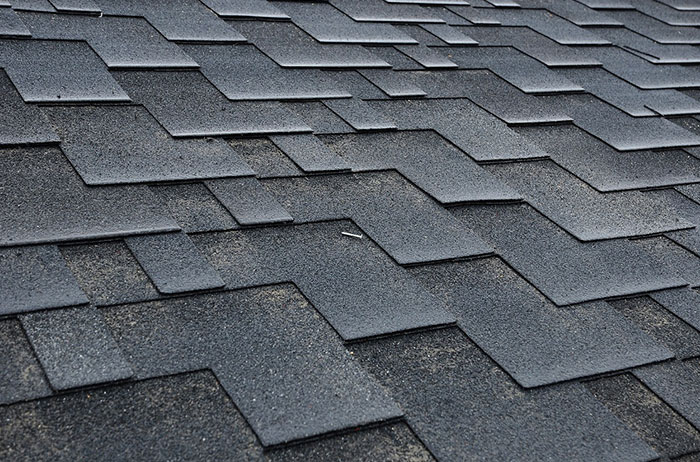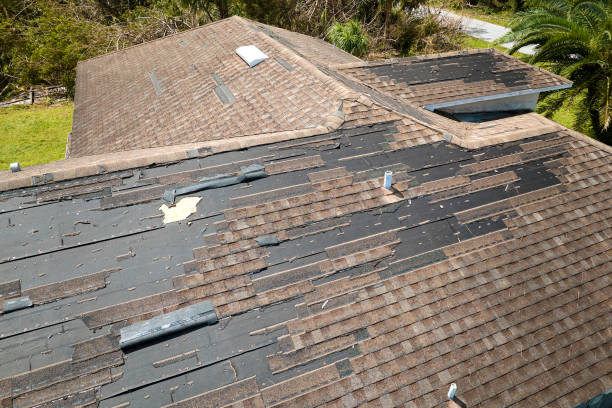Your roof is your home’s primary defense against the elements. Storms, strong winds, and especially hail can compromise its integrity. Identifying hail damage quickly is essential to prevent leaks and further structural problems down the line. But how can you spot the signs of hail damage before trouble escalates?
Understanding Hail Damage
Hailstones, icy pellets that form during thunderstorms, come in various sizes, ranging from small pea-sized pellets to large, golf ball-sized chunks of ice. The severity of hail damage is directly proportional to the size of the hailstone.
Even smaller hailstones, often underestimated for their destructive potential, can cause significant damage to your roof, albeit less visibly. It’s crucial to be aware of the different manifestations of hail damage to assess and address the issue promptly.
- Dents and Dings: The most apparent sign of hail damage is dents and dings in the roofing material. These indentations can be obvious craters or subtle, depending on the size of the hailstone. It’s essential to inspect the softer metal components of your roof, such as flashing, vents, and chimney caps, as they are particularly vulnerable to dents and dings.
- Granule Loss: Asphalt shingles, commonly used in residential roofing, have a protective granular coating that enhances their durability and resistance to the elements. Hail impact can dislodge these granules, leaving bald patches on the shingles. This granule loss not only compromises the shingles’ protective abilities but also accelerates their wear and tear. Additionally, dislodged granules can accumulate in your gutters, potentially leading to clogs and drainage issues.
- Cracking and Bruising: The force of hail impact can cause cracks in shingles. These cracks may be immediately visible or develop as micro-fractures that weaken the shingle over time. It’s important to look for bruises or dark spots on the surface of the shingle, as these can indicate internal damage that may not be immediately apparent. Cracked or bruised shingles are more susceptible to leaks and further deterioration, making it essential to address them promptly.
Where Else to Inspect
Hail damage can be extensive and affect various components of your property beyond the shingles themselves. It’s important to conduct a thorough inspection of the following areas:
- Roof Vents:
- Check for dents, cracks, and any loosened components on all your roof’s vents and protrusions.
- Inspect for signs of hail impact, such as dimples or indentations on the metal surface.
- Look for any dislodged or missing components like caps or screens due to the force of the hail.
- Gutters and Downspouts:
- Examine your gutters and downspouts for dents or holes that may have been caused by hail.
- Damaged gutters can lead to improper water drainage, potentially causing leaks and foundation issues.
- Check for any sagging or misaligned sections of the gutters, as this could indicate underlying damage to the roof.
- Siding:
- Inspect your siding for impact damage, such as dings, cracks, or dents.
- Hail can compromise the integrity of your siding, making it vulnerable to moisture проникновение and structural issues.
- Look for any areas where the siding has been dislodged or panels have been cracked or broken.
- Outdoor Equipment:
- Assess damage to outdoor items like air conditioning units, patio furniture, vehicles, and other objects stored outdoors.
- Damage to these items is a strong indication that your roof has sustained hail damage as well.
- Note any dents, scratches, cracks, or shattered glass on outdoor items that could be the result of hail impact.
By conducting a comprehensive inspection of these areas, you can gain a better understanding of the extent of hail damage to your property. It’s recommended to seek the assistance of a qualified roofing professional to accurately assess the damage and provide appropriate solutions for repairs or replacements.
Safety First
Climbing onto your roof can be dangerous, especially if there has been recent damage. Consider your safety first before deciding to perform your own inspection.
If you are uncomfortable getting on the roof or suspect significant damage, don’t hesitate to call a professional roofing contractor.
What to Do if You Suspect Hail Damage
If you find any of the signs previously described, you likely have some level of hail damage. Here’s how to proceed:
- Document Thoroughly: Take detailed pictures of any hail damage you find, including close-ups and wide-angle shots. Note the date, time, and location of the damage for your records. This documentation is crucial for insurance claims and discussions with roofing professionals.
- Contact a Roofing Professional: A trained roofing contractor will perform a thorough inspection, identifying damage that may not be obvious to you. Their assessment will determine the extent of damage and the necessary course of action, whether it’s minor repairs or a more extensive replacement. Get estimates from multiple reputable contractors to ensure you’re receiving fair pricing.
- File an Insurance Claim: If the damage is severe, contact your homeowner’s insurance company promptly to start the claims process. Your documentation and contractor estimates will streamline this process. Be sure to understand your policy’s coverage and deductibles.
Be Wary of Storm Chasers
Unfortunately, hailstorms often attract unscrupulous contractors looking to exploit homeowners. These “storm chasers” might offer unrealistic deals, use subpar materials, or pressure you into hasty decisions.
Prioritize working with local, well-established roofing companies with a proven track record. Do your research, check references, and ensure proper licensing and insurance.
Don’t Delay
Even seemingly minor hail damage can worsen over time. Neglecting small issues can lead to water infiltration, mold growth, and structural damage. Proactive repairs are far less costly than dealing with extensive damage down the road.
A Note on Roof Inspections
Many roofing companies provide free hail damage inspections. A trained professional is best equipped to spot subtle damage and assess the overall health of your roof. Take advantage of these inspections after a heavy storm, ensuring your peace of mind.
Conclusion
Staying alert to the signs of hail damage and knowing what to do will protect your home from costly problems later on. A strong and functional roof shields your home and family.
For any roofing project, consider Shoreline Roofing. Shoreline Roofing offers information, inspiration, and expertise that make it easier for you to make informed decisions about the roof that’s perfect for you.



